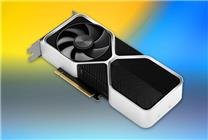Overview of Current Steam Hardware Trends: Insights from August 2023
Key Highlights:
- Top Graphics Cards: The NVIDIA RTX 4060 leads the market, ousting the RTX 4070 from the top 10.
- AMD’s Emerging Presence: AMD’s RX 9000 series is still gaining traction, most notably in Linux systems.
- Dominant Operating Systems: Windows 11 continues to dominate Steam users, accounting for over 60% of the market share.
As of September 2023, we delve into the latest hardware trends on the Steam platform based on data from August. This analysis showcases significant shifts among graphics cards, processors, memory, and operating systems used by gamers worldwide.
GPU Usage Trends
In the realm of graphics cards, the NVIDIA RTX 4060 has reclaimed its status as the most popular choice among Steam players, followed closely by the RTX 3060 and the RTX 4060 Laptop variant. Notably, the RTX 4070 has been displaced from the rankings, with the RTX 2060 taking its place, signaling a change in player preferences.
The entry-level RTX 5050 has yet to make an appearance on the list. However, the RTX 50 series has been on a growth trajectory, with its usage rate climbing from 4.22% in July to 5.7% in August. The RTX 5070 remains the frontrunner, while the RTX 5060 has surpassed both the RTX 5080 and RTX 5070 Ti, securing the second position within the RTX 50 lineup.
On the AMD front, their newly launched RX 9000 series has not yet gained significant traction in mainstream operating systems like Windows, Mac, or Linux. Yet, in Linux’s statistics, the RX 9070 XT and RX 9060 XT have emerged, with usage rates of 1.05% and 0.32%, respectively.
GPU Market Share:
- NVIDIA: 74.88%
- AMD: 17.32%
- Intel: 7.44%
These figures comprise both dedicated and integrated graphics cards.
Processor Market Dynamics
When examining processor usage, AMD has made substantial inroads, surpassing the 40% mark for the first time at 41.03%. Conversely, Intel’s share is on a decline, currently at 58.97%. The data indicates that 6-core processors remain the preferred option for gamers on the Steam platform, underscoring their balanced performance for gaming tasks.
Memory and Resolution Preferences
In terms of memory capacity, 16GB continues to dominate, with 41.88% of users opting for this amount. Following closely is the 32GB capacity, favored by 38.46% of players, demonstrating a preference for substantial RAM for enhanced multitasking and performance.
Screen resolution preferences reveal that 1920 x 1080 remains the most common choice, utilized by 54.44% of gamers. Meanwhile, 2560 x 1440 (2K) has reached a notable 20.19%, whereas 3840 x 2160 (4K) usage lingers at 4.59%.
Resolution Breakdown:
- 1920 x 1080: 54.44%
- 2560 x 1440: 20.19%
- 3840 x 2160: 4.59%
Operating System Landscape
Within the software environment, Windows 11 has ascended to a commanding lead, capturing 60.39% of the Steam user base. Windows 10 follows, accounting for 35.08%, while Windows 7 holds a meager 0.07%. This data highlights the rapid adoption of newer operating systems among gamers, aligning with broader industry trends.
Language Preferences Among Players
Language settings on the Steam platform predominantly favor English, which constitutes 35.62% of users. This is followed by Simplified Chinese at 26.03% and Russian at 9.09%, indicating a diverse global user base with distinct preferences.
Conclusion
The hardware landscape of Steam players continues to evolve, characterized by a clear preference for NVIDIA’s offerings and rising interest in AMD components. As technology progresses, the preferences for memory, screen resolution, and operating systems illustrate the gaming community’s growing demand for enhanced performance and visual fidelity. Keeping abreast of these trends can be invaluable for both gamers looking to upgrade their systems and developers aiming to optimize their titles for the current market landscape.
This comprehensive analysis reflects the preferences that define the modern gaming experience, providing insights useful for anyone involved in the gaming industry or considering their next hardware investment.







